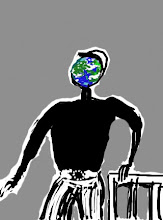What's with all the Biographia Literaria stuff, Adam?
I'm glad you asked. This term, I'm running a BL reading group at my university; we're going through it chapter by chapter. Accordingly, I'm refreshing my memory of the book, chapter by chapter, working through it. I'm struck, as I do so, how many of Coleridge's myriad references and quotations have never been traced or sourced. So I'm doing that as I go.
To what end?
I'm pulling together some academic something on Coleridge, plagiary and the BL. Conceivably I'll published a new edition of the book, if I can find an academic publisher interested in such a thing. Maybe a monograph.
Wow!
I know! It's one of those texts, foundational as far as literary criticism is concerned. I studied it as a student, and re-read it when I started academia (bits of it, anyway) in order to teach it. But going through again in detail has been an eye-opener.
You realise that I'm a figment of your imagination? There's not actually a third-person asking you these questions?
Two things in particular have struck me. One is just how massively the plagiarism issue is hidden in plain view; how much STC goes on about it, how centrally 'plagiary' defines 'fancy', and the extent to which the 'imagination' is a process of using the tools of plagiary against it, making something new out of the orts and scraps of --
Nobody cares, you know.
-- literary tradition. The second thing is: how little other art there is in the book. It's all: poetry, poetry, poetry (and, of course, metaphysics, metaphysics, metaphysics). One reference to a painting is the only other mode I've come across: where's music? Dance? Sculpture? I always thought of Coleridge's aesthetic theory as an aesthetic theory that discussed all the arts; but now I'm wondering if it isn't much more specifically logocentric than that. And for Gospel-of-St-John religious reasons.
You done?
Sure. For now.
Thursday 29 November 2012
Subscribe to:
Post Comments (Atom)

No comments:
Post a Comment